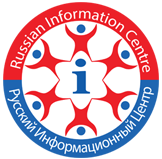Palace Square is the main square of Saint Petersburg. All kinds of festivities, demonstrations, parades, manifestations are held there. The ensemble of the square is of great architectural and historical importance. It had been created by the several generations of outstanding architects during several centuries. The oldest building in the composition is the Winter Palace that is why the square got its name. It was created by architect Bartolomeo Rastrelli in 1754-62 in sumptuous Baroque. The facades of the former royal residence are very impressive and bright in colour decorated with numerous statues. The interiors are no less grand. According to Rastrelli’s own words, “everything in the palace is decorated with great lavishness”. Now it houses part of the Hermitage museum which is one of the largest in the world. The compositional centre of Palace Square is the Alexander Column. It was put up to commemorate Russia’s victory over Napoleon in the War 1812. It was designed by architect A.Montferrand in 1830-34. It is the highest monolithic column in the world. On the whole, the monument is 47.5m high including the pedestal and the statue of the angel. The column is not fastened to the foundation and stands without any support because of its own weight which is over 600 tones. The column is topped with an angel having the cross in his hands. It symbolises peace in Europe after the defeat of Napoleon. The angel has facial resemblance with Alexander I.
The semi-circular grand facade of the General Staff Building forms the southern part of Palace Square. It was constructed by architect Carlo Rossi in 1819-1829. It was erected to house the Headquarters of the army and two ministries of foreign affairs and finance. This classical yellow building has one of the longest facades in Europe (nearly 600m). Its monotony is broken by the Triumphal Arch surmounted with a Chariot of Glory with the winged goddess of victory Nika to glorify the Russian victory over Napoleon. In 1848 the building of the Headquarters of the Royal Guards was put up by architect A.Bruillov. He managed to link the new building with the surrounding ones and completed the square ensemble from the east.
Palace Square witnessed all major developments of the Russian revolutionary movement. It was here the first revolution started on the 9th of January 1905. On that Sunday a peaceful demonstration of thousands workers with their families came up to the Winter Palace headed by priest Gapon. They were unarmed, dressed in their Sunday best clothes, carried icons and portraits of the tsar, sang church anthems. The representatives of the participants of the demonstration hoped to present a petition to the tsar or any of his Ministries asking them to improve their life conditions. Nicholas II himself was outside the city and refused to meet with the people. The soldiers were given the order to open fire on the demonstration. Nearly one thousand people were killed and five thousand were badly wounded on Palace square. Those events went down into the Russian history as the Bloody Sunday. It gave push to the first revolution, which lasted for two years until 1907 and was brutally suppressed.
The most severe reaction followed: many people were arrested and put into jails, some revolutionaries emigrated, and the country was practically court-martialed. In 1910-1911 a new revolutionary upsurge began in the country, strikes, political demonstrations, and in 1914 the First World War broke out. The whole country was in crises, starvation, shortage of money, and it was clear that another revolution was imminent. It started in February 1917 and as a result Nicholas II abdicated. The Provisional Government was formed from the members of the State Duma who represented the interests of the richest people. Simultaneously the Soviets- the Council of Workers, Soldiers and Peasants- came to power. This period in Russian history is known as Dual power. Those two governments occupied the Taurida Palace and coexisted until July 1917. After the July reprisals, the Provisional Government took over and moved to the Winter Palace, the Soviets went to the Smolny. The members of the Provisional Government didn’t solve any issues of the revolution: the war went on and it was the main cause of dissatisfaction, the land reform wasn’t carried out too. All that put together caused another revolution.
The third revolution began as an armed uprising in St. Petersburg on the 24th of October 1917. The next day all key points in the city- the Central Telegraph, Telephone, bridges, railway terminals- were in the hands of the revolutionaries, the only exception was the Winter Palace where the Provisional Government situated. At 9:45p.m. of October 25th, after the signal given by the Cruiser Aurora the storm of the Winter Palace began. At 2:10a.m. of October 26th eighteen Ministries of the Provisional Government were arrested in the Palace. The same night the Second Congress of the Soviets was held in the building of the Smolny Institute and elected the first Soviet Government- the Council of People’s Commissars- with Lenin at the head.
Text by Ekaterina Chistyakova
Location : St.Petersburg
Visit the grand locations Palace Square and many more that St Petersburg has to offer!
Contact us@ Russian InfoCenter to Book Classic Russia tour 5n/6d and more tour packages from India to Russia
Choose from flights ex Delhi, Mumbai & Calcutta
Fill the form below and we’ll get back to you right away!











